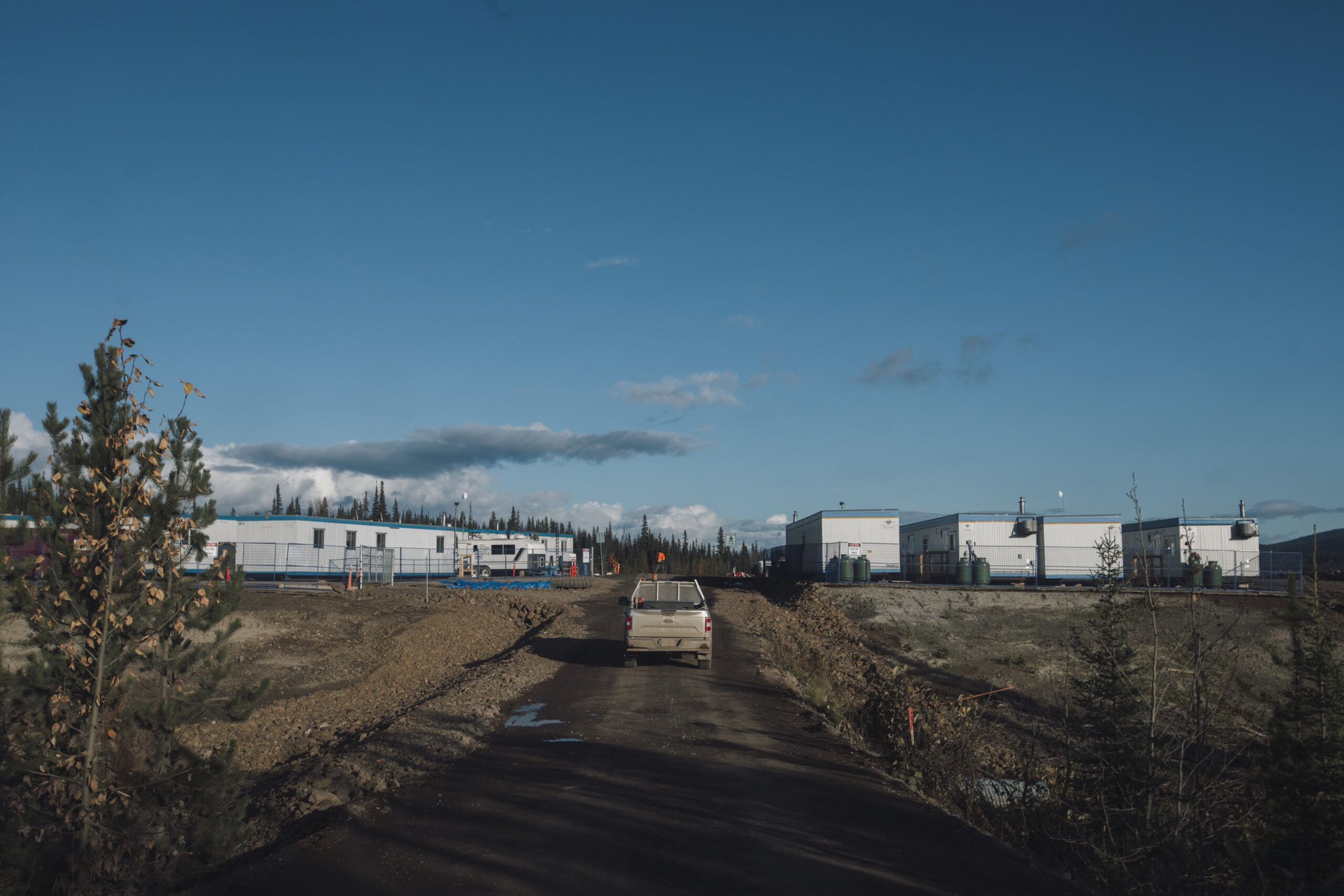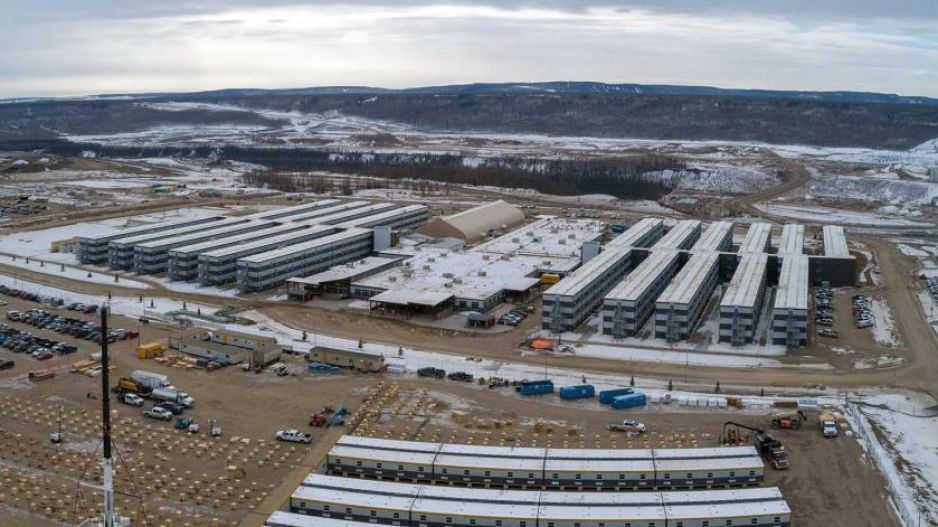
Rocky Mountain coal mine in Alberta takes next step to expansion
In Alberta, a massive open-pit coal mine near Jasper National Park is hoping to expand...
The province didn’t track the course of COVID-19 cases as they left work camps in northern B.C. and travelled into nearby communities, despite ongoing concerns over the impacts of allowing the camps to operate during the pandemic.
That’s according to an updated response to a freedom of information request The Tyee filed with the Northern Health authority a year ago.
“As for the information relevant to in-community transmissions traced back to work camps, Northern Health has no responsive records,” the health authority said in the response provided last week following complaints to B.C.’s Office of the Information and Privacy Commissioner over incomplete records provided previously.
“We did not look for in-community transmissions associated with the camps/worksites as part of our process and the camps did not do contact tracing for in-community cases,” it continued.
The health authority added that anyone who tested positive for COVID-19 and identified as working at industrial camps in the north was referred by Northern Health back to their employer’s health-care provider for contact tracing. It also said it had directed workers from outside the region to connect with health-care providers in their home community for followup.
The response, which comes more than a year after The Tyee first sought the contact tracing data through the province’s freedom of information laws and after two complaints to the OIPC, appears to contradict previous statements that the health authority could not release the data.
A spokesperson for Northern Health authority said in an email to The Tyee that it worked closely with industrial work camps, which typically have in-house contact tracing, but did not have the capacity to conduct extensive contact tracing or establish patterns of COVID-19 transmission from work camps in the region.

Fears that the camps, which house hundreds of resource industry workers in proximity to northern communities, could spread the virus date back to the earliest days of the pandemic.
In March and April 2020, open letters from the Union of BC Indian Chiefs, David Suzuki Foundation and former Northern Health authority chief medical health officer David Bowering all called on the province to close work camps associated with industrial projects, citing undue risk to workers and nearby communities, which often lack sufficient health facilities.
Instead, the province declared large industrial projects like the Site C dam, Coastal GasLink pipeline and LNG Canada terminal in Kitimat, which are all under construction in the north, as essential services during the pandemic, allowing the camps to remain open.
By late 2020, northern communities were beginning to see the effects of that decision. In November, Wet’suwet’en Hereditary Chiefs wrote letters to provincial health officer Dr. Bonnie Henry, calling on her to close the camps as COVID-19 began to make appearances in the nation’s communities.
In December of that year, Elders in the Wet’suwet’en community of Witset reported that a cluster of cases there could be directly linked to workers travelling between home and work camps for Coastal GasLink.

Days later, on Dec. 20, 2020, Northern Health declared an outbreak at two of the pipeline project’s work camps. The company responded by saying that as a “proactive measure and out of an abundance of caution” it was closing three of its work camps and sending workers home, just before the holidays.
On Jan. 22, 2021, the outbreak was declared over, a total of 56 people having tested positive. But that number doesn’t capture the spread of COVID-19 into communities, information asked for by The Tyee in FOI requests that the province has been slow to respond to.
The revelation that Northern Health does not keep contact tracing data appears to contradict previous statements from Northern Health, in which it had said that while the health authority collects and stores COVID-19 data, it’s under the control of the Ministry of Health, which approves its release. “We were told that we’re not to be releasing any data for COVID,” Northern Health’s privacy office said last year.
The health authority suggested the request be filed with the ministry and BC Centre for Disease Control, which had previously directed the request to Northern Health.
The Tyee first asked for complete camp COVID-19 cases — not just those associated with an outbreak, which have been publicly reported by the province — in addition to contact tracing data through a freedom of information request to the Ministry of Health on Jan. 4, 2021. The ministry responded by saying the records were best sought from the BCCDC, through the Provincial Health Services Authority. The Tyee made its request to PHSA that day.
Repeatedly, the freedom of information request was pushed over to provincial public relations staff despite many efforts. The Tyee was never able to review complete COVID-19 work camp numbers or contact tracing data. (See sidebar.)
B.C.’s Freedom of Information and Protection of Privacy Act does not specifically lay out how a government body should process a request or specifically prevent it from involving communications staff. As such, the OIPC says it does not get involved with how a request is processed, only whether the outcome is in accordance with FIPPA.
However, Ann Rees, a former journalist with the Vancouver Province and professor at Kwantlen University College, says the practice of involving communications people, whose role it is to polish responses before they’re released to media, is concerning.
“It absolutely is interference in the FOI process to put it in the hands of communications people,” she says, adding that the job of a communications person is different from that of an information analyst. “One is a political job to spin the story in a way that reflects well on government. When you mix that with FOI, which is essentially providing records to the public in accordance with the law, there is an obvious conflict of interest there. But increasingly, that’s happened.”
In 2002, Rees was the recipient of the Atkinson Fellowship in Public Policy, which allowed her to spend a year researching the effectiveness of Canadian freedom of information laws. She says there’s a long history of information officers sharing requests with communications staff, a practice that initially started with the federal government.
But that practice has slowly become the habit of the B.C. government, where she says the FOI process has become increasingly politicized and opaque over the past 25 years.
“Government, as they began to realize the power of access to information and FOI, increasingly tried to monitor it,” she says, adding that the governments were looking for a heads up on the public response that was coming. “That’s how they brought the communications people in because they’re responsible for political reaction and response and managing the message.”
As The Tyee filed its original FOI request with the province in early 2021, the north was experiencing a wave of COVID-19 cases. Outbreaks had recently occurred at work camps for LNG Canada and Coastal GasLink and the provincial health officer had just announced a phased return to work for industrial projects across the region.
At the same time, the province had just completed a months-long program to add hundreds of contact tracers to its provincial monitoring program. CBC reported that contact tracing in the region would focus on tracking the spread of COVID-19 “in health-care workers, schools, long-term care homes, industrial projects, First Nations and known clusters or outbreaks.”

By early 2022, due to the rapid spread of the Omicron variant, contact tracing had again become overwhelmed. Again, the province said contact tracing was being focused on high-priority settings — among them, work camps and Indigenous communities.
But while managing COVID-19 cases at industrial camps has been a priority during the pandemic, epidemiology teams did not have the capacity to conduct “extensive or systematic” investigations into the links between industry and in-community cases, Northern Health media relations manager Eryn Collins said in an email to The Tyee.
“The priorities of contact tracing are both to track the spread of illness for an understanding of where transmission events are occurring, and to stop the spread — regardless of where exposure occurred,” Collins said. “When COVID-19 safety measures were at peak implementation in industry settings, there were often very few if any reported close contacts.”
Collins added that in late 2020 and early 2021, Northern Health was providing supplementary contact tracing for COVID-19 cases associated with work camps, including cases that didn’t reside onsite.
“This was however the minority of cases associated with industrial camps, and as a result Northern Health does not have a comprehensive picture of transmission patterns,” she said.
Get the inside scoop on The Narwhal’s environment and climate reporting by signing up for our free newsletter. A $335 million funding commitment to fund...
Continue reading
In Alberta, a massive open-pit coal mine near Jasper National Park is hoping to expand...

A trade war could help remake B.C.’s food system, but will family farmers be left...

First Nations are leading efforts to make sure lake sturgeon can find a home in...
